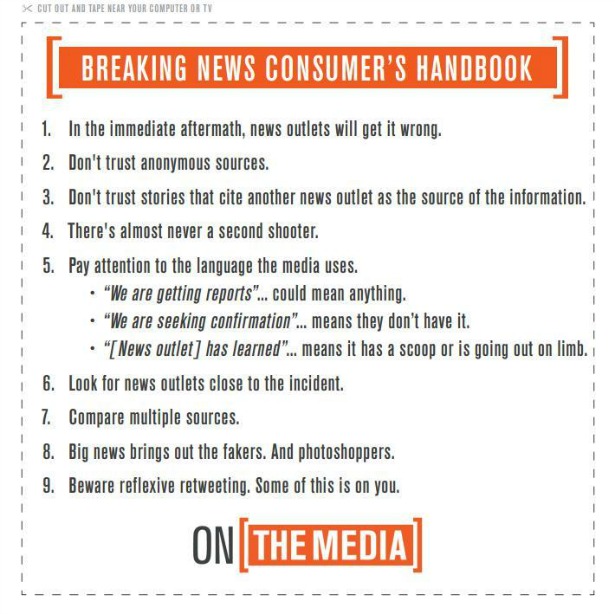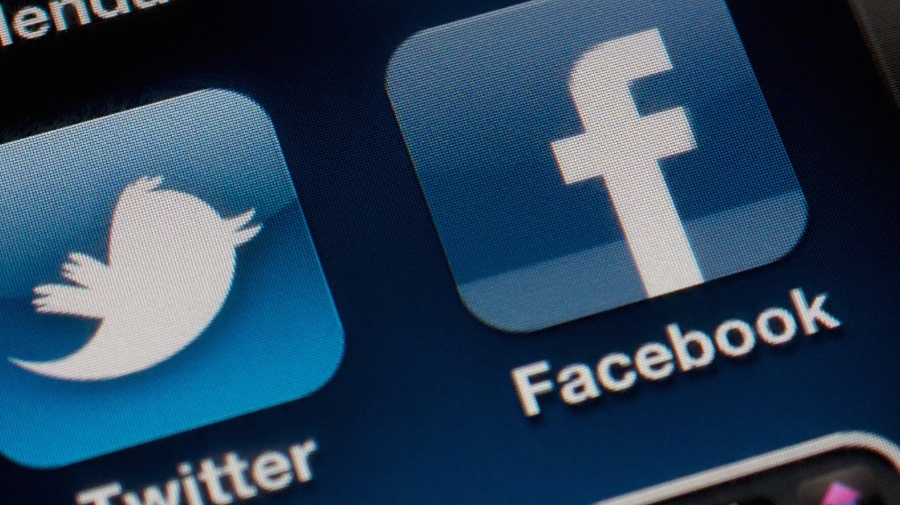In April Facebook activated its safety check feature after a bombing in Lahore, Pakistan, sending alerts asking people to check in to confirm they were ok. However, because of some unknown error, the alerts were received by people all over the globe. Marc Bain wrote over at Quartz that “Facebook’s erroneous ‘safety check’ accidentally became a breaking news alert” because it was the first that many people had heard about the attack.
This got me thinking about the power of big social platforms to drive attention to critical issues and what their role might be in helping protect and educate eye witnesses and citizen journalists who use those platforms.
The evolving role of social media companies during breaking news
Google, Twitter and Facebook all have disaster response teams who are building important tools and providing critical services for people to use in moments of natural disasters. Facebook launched its Safety Check feature in 2014, Twitter Alerts launched in 2013, and Google’s crisis response team has been active since at least 2010 when it helped with the response to the Haiti earthquake.
Apparently @Facebook thinks I’m in Pakistan. Fortunately not! Interesting to see how this feature works though. pic.twitter.com/a0BCAfrDfr
— balungile (@balungile_m) March 27, 2016
However, these platforms aren’t only places people go for information after a disaster, they are also the places people go to share photos, videos and updates during breaking news. Part of ensuring that people have access to high quality, trustworthy information in times of crisis is helping people share accurate info from the start and stemming the flow of misinformation.
To that end, in the past I have encouraged newsrooms to “train their communities in verification, news literacy, and eyewitness media” because I believe that community engagement can lead to better citizen reporting, safer eyewitnesses on the ground and an audience better prepared to spot bad information.
There is more we could be doing to ensure the safety of eyewitnesses and ensuring they know their rights when they are documenting breaking news – and platforms could be important partners in that work.
Organizations like WITNESS have created extensive training, guides and even apps that help eyewitnesses stay safe and capture verifiable videos. But most consumers aren’t going to have specialized apps on their phones, nor will they have been exposed to training that can prepare them for what it is like to be part of a breaking news event. We need to meet them where they are.
Educating and engaging potential eyewitnesses
What if Twitter, Facebook, Periscope, YouTube and others helped inform people more directly about their right to record? About how to stay safe? Or about how to respond when newsrooms want to use your footage or photos? What if user safety and rights were built into the UI of these networks and apps?
I don’t see this happening in real time, as breaking news unfolds. That would likely be too chaotic and uneven. Instead, the focus would be on reaching people with a public awareness style campaign focused on eyewitness media.
As more and more people take up the tools of media-making and share photos and videos, could social networks target them with this kind of information? YouTube and others already notify you about your responsibilities under copyright law whenever you upload a video. What if they also helped notify you about your right to record? Would Periscope create an optional training to be embedded in their app that people could take? I’m sure there are more elegant solutions than these, but the idea here is to expand digital literacy and ‘superpower’ eyewitness media by helping people use these apps and tools better.
Given the unique legal nuances around many of these issues, state by state in the US and in different countries around the world, platforms might worry about providing legal advice or being held liable for providing safety information. That is why it makes sense to work with partners and link to resources that already exist.
Organizations like WITNESS, the ACLU and Reporters Without Borders have already done the hard work of creating amazing tools and resources. Let’s find creative ways to get that information into the hands of more people.
Reaching creators and consumers
Real-time social media has meant that, while we may not all be eyewitnesses, we are increasingly witnessing events unfold in real time, and sorting through the often confusing and inaccurate reports which go along with that. Beyond helping educate potential eyewitnesses about their safety and rights, there are creative ways that platforms could also help cultivate more skeptical consumers and slow the spread of misinformation.
Within minutes of breaking news hitting Twitter, someone in my network usually shares On The Media’s “Breaking News Consumer Handbook”, a cheat sheet designed to help people sort out fact from fiction. Those tweets often get a good number of retweets, but imagine if Twitter donated sponsored tweets to partner organizations to amplify that kind of news literacy during breaking news. Similarly, Facebook could donate promoted posts to help spread verified information or make sure a debunk spreads as far as the original rumor. Something similar could be done with Google Ad Words.

On The Media’s “Breaking News Consumer Handbook”
These are all tools the platforms already have at their disposal. Working with trusted partners, we could reimagine those commercial products as ways of ensuring critical information reaches the broadest possible audience during breaking news.
How we create and consume information around disasters, attacks and conflicts is in flux but there is no doubt that social media companies are going to be paying a central role in the work for a long time to come.
The fact each of them has created emergency response teams is notable and admirable. Helping journalists, eyewitness and the public stay safe and understand their rights is a logical extension of that work.



